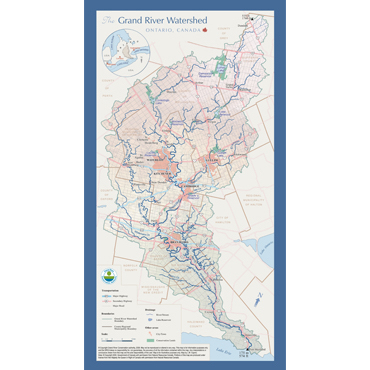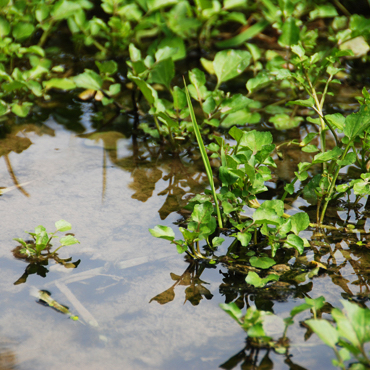Because our architectural practice and work is rooted in the physical world and the landscape that our designs affect, it’s important that this blog stay “grounded.” Literally.
Although discussions about design are often abstracted from context, that’s not us. Our work and interest is about making and enhancing particular places.
That’s why we’ve decided that Design and Community has a physical lifeline, which is the particular natural, rural, urban, and suburban mix associated with the Grand River Watershed, where our office and many of our projects are located.
We often think of a watershed as a geographic unit divorced from our built form. It’s not. The two ecologies of natural and built form are inseparable. Is it long overdue that we start designing and thinking that way?
Give us your thoughts on this. We’d like to challenge everyone to think of our community as including both built and natural form, in a sustainable relationship!
Does Victoria Street and Highway 7 pass over the Grand River at Breslau, or is it the Canadian Heritage River passing under that commuter route and through that community? They can never be separated, except by traffic engineers and hydrologists. Will we get things right by concentrating on one, or the other?
Isn’t it better to concentrate on their relation?

What do you think of this idea of these many systems around us
- in balance
- in relation
- working together
- acknowledging their limits
The watershed is an ecosystem of:
- the Grand and its four tributary rivers: the Nith, Eramosa, Conestogo, and Speed, that flow into Lake Erie from Central Southwestern Ontario, Canada;
- 32 local municipal governments and seven upper tier governments;
- a populace of 800,000 expected to grow to 1.2 million within 20 years;
- an extensive and diverse agricultural, industrial, and commercial economy with a higher GDP (gross domestic product) than some Canadian provinces and American states;
- the mid-size cities of Brantford, Cambridge/Kitchener/Waterloo and Guelph, along with many smaller communities;
- a diverse ethnocultural and socio-economic mix that includes aboriginal Canadians and Canadians of almost every description;
- a sense of itself as neither part of Toronto’s sphere of influence, nor related to any one of the Great Lakes that surround and form the Southwestern Ontario Area.
We often think of watershed as divorced from community, but standing in the Grand River with your fishing rod at Paris, how exactly do you separate the run-off from the roof of the Waterloo Region Airport Terminal from the rainfall in the Elora Gorge?
We’re all in this together.





